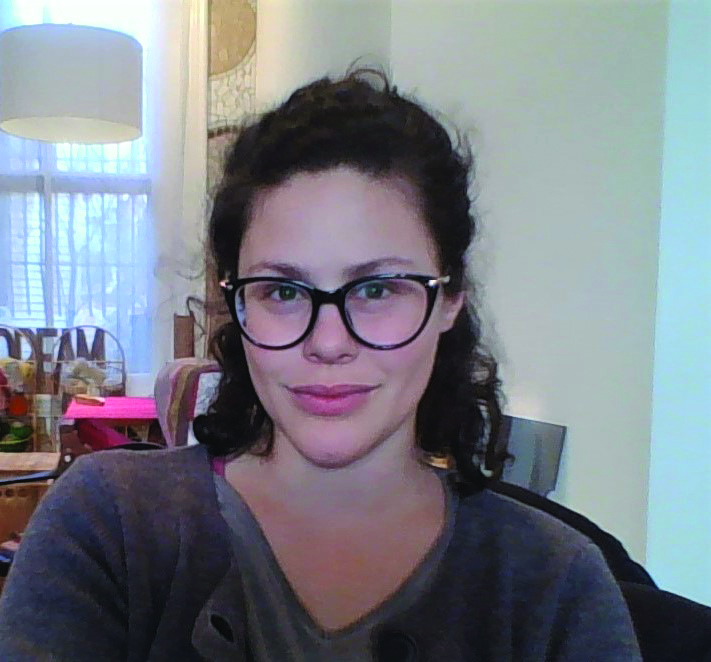What I’ve learned about creating truly inclusive workplaces and how you can do it too
 October 22, 2019
Category: Featured, Long, Purpose
October 22, 2019
Category: Featured, Long, Purpose
Disclosures
This guest post was written by Lauren Prince, shop manager and textile leader at Entwine.It’s 9:59 a.m. Joe is holding a pocket-sized, digital clock close to his face with both hands. “Almost,” he whispers as he walks toward the front door of the shop. The clock’s dimly lit numbers change to 10:00 a.m. He returns it quickly to his pocket. “It’s time!”
Joe swings the door open and walks outside, flag in hand. He returns and carefully positions the heavy, hand-carved wooden sign in the window, notifying the public that we are ready for business. “We’re open,” Joe says with a smile, his enthusiasm echoing across the walls of Entwine, a textile studio and shop.
This opening routine is etched in my mind. As the shop manager and textile leader of Entwine, I witnessed some variation of it every week during the year I worked with Joe. Each time, I was impressed — not because Joe carries out this routine as a person who has autism spectrum disorder, but because his organizational skills and job performance are objectively worthy of appreciation.
Joe is an asset to the business, assisting shoppers with a smile and running the cash register diligently. He is helpful and attentive to details — the guy with whom everyone wants to work. Joe recognizes the importance of his responsibilities, takes pride in his work, and shows interest in cultivating his job skills.
In short, Joe embodies many of the qualities that business owners search for in a new hire. Even so, most employers would struggle to see Joe’s potential, their vision of his abilities clouded by his disabilities. They would consider him “too disabled” to contribute.
Joe isn’t alone. In a time of historically low unemployment rates, interest in new talent pools is increasing. However, as job prospects for people with visual, hearing or physical disabilities, and some types of autism spectrum disorder improve, people like Joe remain left behind.
There’s an elephant in the room when most organizations talk about workplace diversity. It’s that so-called inclusive hiring practices are still ironically exclusive of people with intellectual and developmental disabilities (IDD).
According to the National Conference of State Legislatures, nearly 9.5 million children and adults with IDD receive government financial support; fewer than one in five are employed. Yet many want to work and have real strengths that are valuable.
Since Entwine opened in Phoenixville in 2016, my colleagues and I have been working with people of all abilities to improve employment prospects for people with IDD. Entwine is one of four social enterprises run through Camphill Soltane, a Camphill community. As part of our community-building efforts, we create workplaces for people whose disabilities may prevent them from being employed elsewhere.
There’s also Sol Kitchen, Community Arts Phoenixville, and Soltane Cafe. Each of these enterprises has people with IDD working or volunteering within them, and offers a range of participation options. For example, a worker may start as a volunteer, transition to intern and then become a paid employee.
Along the way, we invest time and resources in identifying and strengthening skills and talents, and in creating workplaces well-suited to many different people. Importantly, we are not service providers. Our work is rooted in the Camphill movement, which believes in the shared humanity of all people. We live and work inclusively because we know that all people can contribute and everyone benefits from the experience.
The Camphill movement celebrates its 80th anniversary next year, but its approach remains remarkably groundbreaking. Organizations that want to operate more inclusively can learn from it. Here are some key practices:
-
Inclusive workplaces begin with inclusive hiring practices. Connect with local disability service providers or groups like Special Olympics to share news about employment opportunities. Also, be flexible about customizing application and interview processes to applicants’ needs.
-
Offer different ways to contribute. Some people with IDD may prefer to start as a volunteer or intern and then to transition to paid employee as new skills are learned and responsibilities are added.
-
Invest in volunteers’ success by developing clear tasks and responsibilities. Regularly set aside time to create a list of organizational needs, and describe how volunteers can help meet them.
-
Take time to observe and understand individual work and learning styles and pacing. Look for subtle cues. If a volunteer or employee hesitates when asked to do a task, they may need additional modeling, training, or support.
-
As volunteers or employees learn new skills, develop milestones to validate and motivate their progress. Keep track of specific accomplishments and suggestions to use when providing feedback.
-
Remember October is National Disability Employment Awareness Month. The national campaign from the Office of Disability Employment Policy offers helpful information and resources for employers.
It’s time to end selective inclusion by opening our eyes to the talents of people with IDD and opening our minds to their potentials. Joe and his colleagues want to be open for business. They are awaiting the opportunity to contribute. We can and should do more to ensure our businesses are open to them.
Trending News










